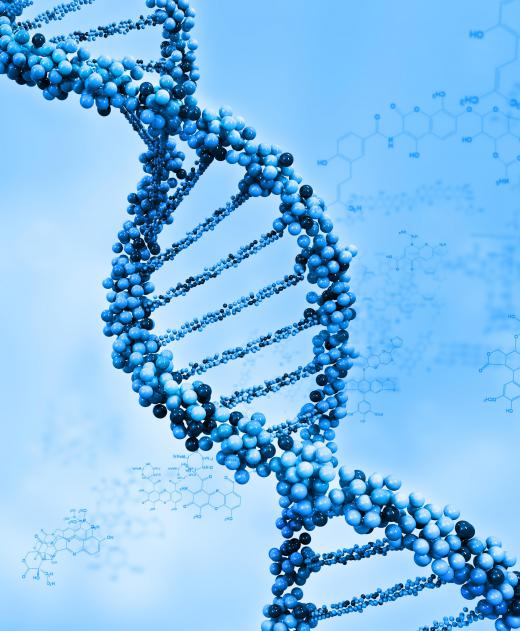What is Uracil?
Uracil is one of five nitrogenous bases that attach to nucleotides found within cells. A nucleotide is made up of a five carbon sugar, pentose sugar, with a phosphate group and base attached. Nucleotides are the building blocks for two important nucleic acids – deoxyribonucleic acid, DNA, and ribonucleic acid, RNA. The other four bases are cytosine, guanine, adenine and thymine.
The five bases are broken up into two groups based on their structure. The pyrimidine bases are made up of a single ring of atoms and include cytosine, thymine and uracil. The purine bases have a double ring of atoms and include adenine and guanine. They are called nitrogenous bases as they contain nitrogen and carbon atoms in the ring(s).

Within the cell, the bases are paired to make DNA molecules and also during certain processes, such as DNA replication and protein synthesis. Pairing of the bases is very specific and each base only pairs with one other. Adenine pairs with thymine or uracil and cytosine pairs with guanine. The complementary base pairs are always made up of a purine base and pyrimidine base to ensure the distance between the paired strands is uniform and stable.
Three of the bases — adenine, cytosine and guanine — are attached to nucleotides that make up both DNA and RNA molecules. Depending on whether the nucleic acid is an RNA molecule or a DNA molecule will determine whether thymine or uracil is the base used. Thymine is only used to make DNA molecules, while uracil is only found in RNA molecules. This is one of the key ways that RNA and DNA molecules differ.
DNA and RNA molecules have three distinct differences. The first difference, as stated above, was whether uracil or thymine was the base used. The second difference is that DNA is double stranded while RNA is single stranded. Lastly, the five carbon sugar is different for RNA nucleotides compared to DNA nucleotides. The pentose sugar in RNA is ribose and has an oxygen atom that is not found in the DNA sugar, deoxyribose.
The structure of uracil and thymine differs very slightly also. The only difference is that uracil lacks a methyl group, a carbon atom with three hydrogen atoms attached, which thymine has. This slight difference is enough to allow enzymes to distinguish between DNA and RNA molecules. Enzymes have a very specific shape at the active site where they attach to other molecules. The methyl group gives thymine a different shape to uracil, which ensures the correct enzymes interact with the correct molecules.
AS FEATURED ON:
AS FEATURED ON:











Discuss this Article
Post your comments